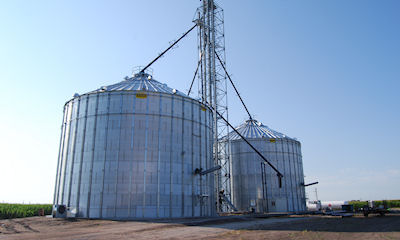June 3, 2015

Grain sorghum or milo can be readily substituted for corn in cattle rations, says Warren Rusche, South Dakota State University Extension cow-calf field specialist. But it's not a one-for-one replacement and there are a few tricks to feeding it properly.
It can also be used for dairy and swine.
The energy content of milo is usually about 85% of that for corn grain, which is usually reflected in price, Rusche says.
Because milo is more variable in starch and protein content than corn, periodic feed testing is warranted if it will be the base of a finishing diet.

Some farmers reacted to drought conditions and low corn prices by planting sorghum instead.
"The seed coat of milo is essentially indigestible, so the crop needs to be ground or rolled for feeding. In general, grinding milo finer results in improved feed efficiency compared to coarser particle sizes Grain sorghum residue is very similar to corn stalks and makes an excellent resource for fall grazing cows."
Forage sorghum works best as a silage crop. It is lower in energy content compared to corn silage. Actual composition can vary depending on hybrids, harvest maturity, and storage losses, so producers should sample their own feedstuffs for analysis.
The impact of using sorghum silage depends on the class of livestock. Sorghum silage works well in gestating cow diets. Growing and backgrounding cattle would most likely gain more slowly because of the lower energy content compared to corn silage unless cattle feeders add additional amounts of energy dense feeds such as grains or distillers.
There likely would be only small differences for finishing cattle because of the small amount of roughage included in those diets.
You May Also Like




